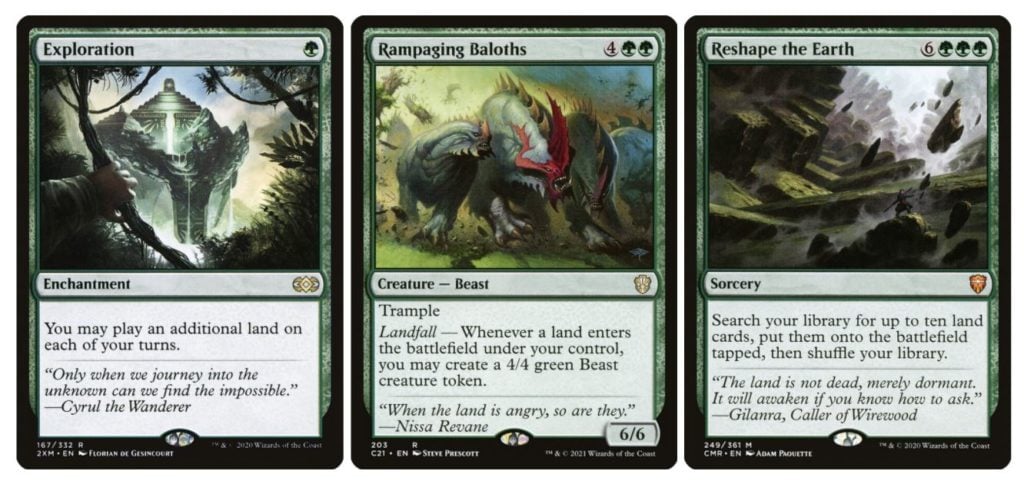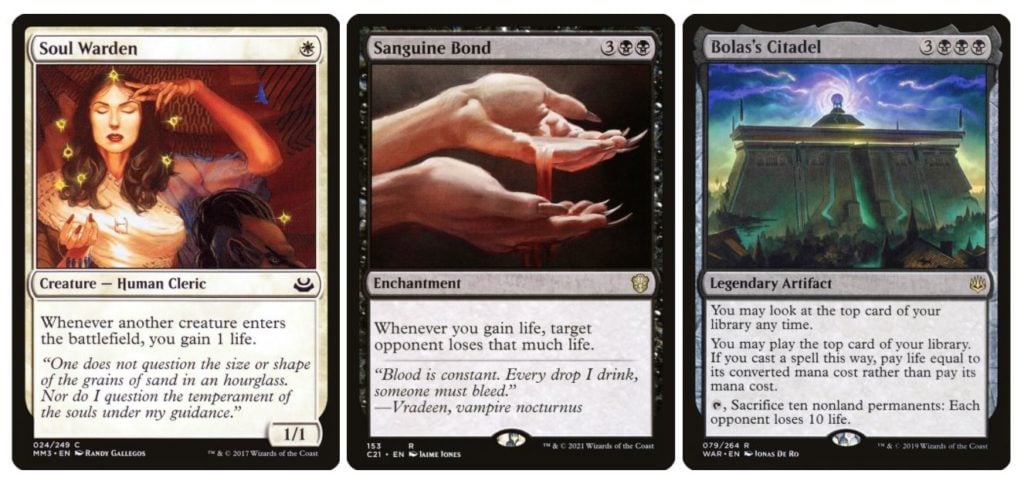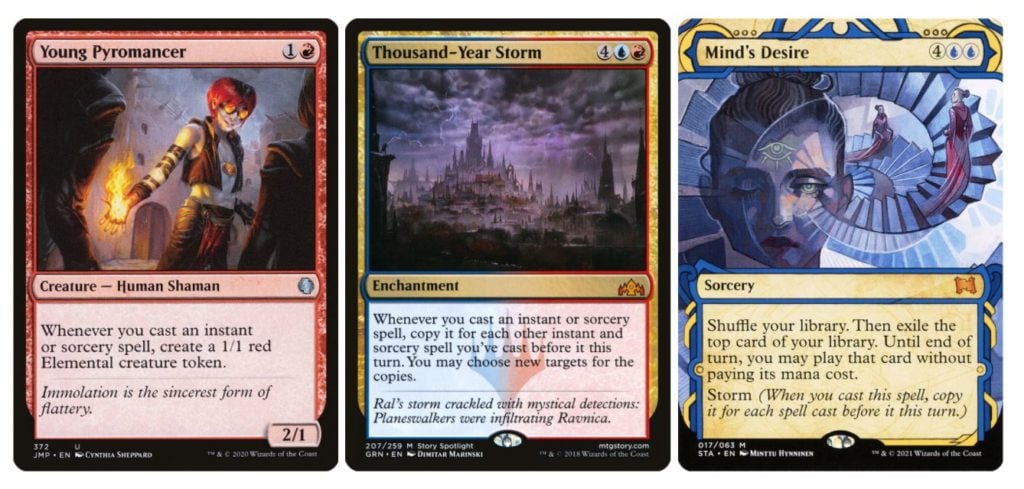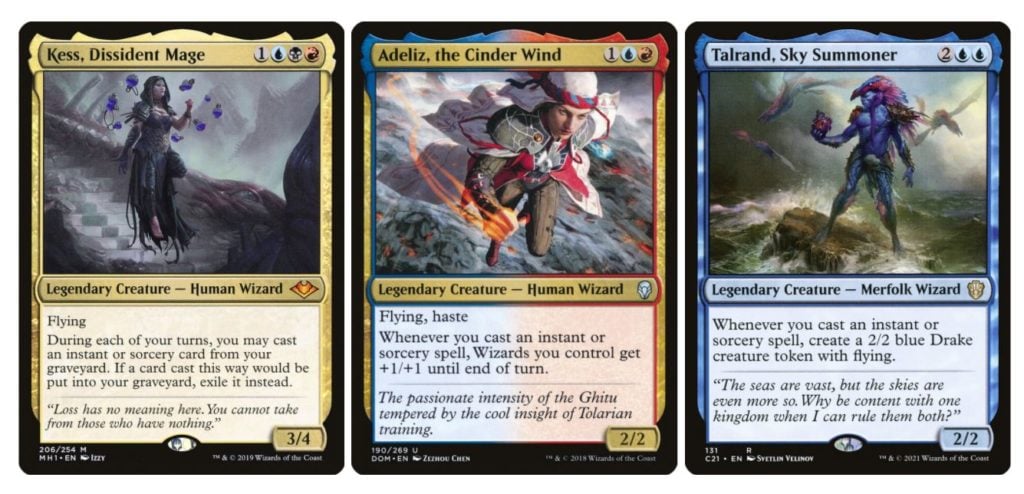Learning and playing Magic can be an exciting experience. There are so many cards, formats, and decks to choose from, and there’s always something new to learn. As thrilling as this is, starting out can feel daunting. Take Commander for example: there are over 1,200 commanders to choose from, and that figure is growing rapidly every year! Even for more seasoned players like myself, choosing the right deck or commander can feel like an impossible task.
If you’re new to Commander or Magic in general, this guide should help you to choose your first deck or commander. I’ll give you an in-depth look at four of the most popular Commander deck archetypes, including different options for good starting commanders.
Lands
Lands are the basic resource in Magic, as they allow you to play your spells. While they may be the basic building block behind every deck, they’re far from boring! Lands decks focus on getting extra advantage from making your land drops, and even let you play several lands per turn. Most Lands decks tend to have green in them, as it’s the color with the best support for land strategies.

There are two main kinds of cards you’ll see in Lands decks: cards that let you play extra lands each turn, and cards that reward you for playing lands. Exploration is one of the most well-known Lands cards; it gives you an extra land drop every turn, which is exactly what these decks need to do their thing.
There are countless cards that reward you for playing lands, and Rampaging Baloths is one of the more popular choices. Its landfall ability is very popular in Lands decks, and in Commander in general. If you couple this with Exploration, you can see how this can get out of hand quickly!
Lands decks are often considered to be “ramp” or “big mana” decks as well. These are decks that generate a lot of mana quickly to play huge spells ahead of schedule. With the amount of lands you’ll usually be playing, it’s easy to see the similarities! Reshape the Earth is a great example of a huge spell that Lands decks could make great use of, especially if you have a Rampaging Baloths on board.

As for commanders, you’re spoiled for choice. EDHREC’s Lands Theme page lists 24 of the most popular commanders for the theme, and many others are perfectly viable as well. If you want to play a relatively fair and interactive deck, Tatyova, Benthic Druid is a great choice. She’s currently one of the most popular commanders, and for good reason: whenever you play a land when she’s on board, you draw a card. You don’t have to worry about card draw spells in your deck with this kind of value in the command zone, so you can play more fun cards instead!
If you’d prefer to be a little more aggressive, Omnath, Locus of the Roil is the commander for you. Its landfall ability is one of the strongest available, and if your board gets blown up by a sweeper, Omnath will dish out a ton of damage as payback.
If you love to play with the graveyard, The Gitrog Monster is the perfect Lands commander. It’ll put lands into the bin, and you’ll get to draw cards in the process. Gitrog is known for being a strong commander, and a lot of Gitrog decks contain a few combos; if that sounds like your kind of game, then this commander is second to none.
Lifegain
Life is one of the most important resources in the game. Without it, you lose! This is generally why a lot of newer players tend to gravitate towards lifegain as a strategy.
Some players may tell you that gaining life only lets you avoid losing, which is no way to win. But don’t let that stop you from gaining all the life you want! The more payoffs are printed, the more powerful Lifegain strategies become.

The two main card groups you’ll see in Lifegain strategies are ones that gain you life and ones that reward you for gaining life. Soul Warden is a classic lifegain creature, giving you a little bit of life for every creature that enters the battlefield. These kinds of effects can really add up, especially if you have a few of them out at once!
Sanguine Bond is one of the most popular payoffs for Lifegain. It effectively weaponizes all of the extra life you gain, and it can even be a combo piece (alongside Exquisite Blood).
Another way you can benefit from tremendous lifegain is by paying life for powerful effects. There are countless cards that let you trade life for other resources, and Bolas’s Citadel is one of the most (in)famous. When your life total regularly hits triple digits, what’s a few life points to play some spells from the top of your deck?

Lifegain commanders have gotten a shot in the arm in the past few years, especially as green has gained a share of the pie. Trelasarra, Moon Dancer is one of the newer Lifegain commanders, and she’s one of the most fun. As you gain life, she grows to enormous proportions, which is perfect if you’re looking to be aggressive. I recently wrote a piece on budget decks that featured Trelasarra, if you’re looking for some inspiration.
Dina, Soul Steeper is another great Lifegain commander, especially if white doesn’t appeal to you. There are a number of effects in black that can give you life for killing creatures, which lets you keep everyone else in check while you do your thing.
If you’re looking for something a bit different — or if black really appeals to you — K’rrik, Son of Yawgmoth is the ideal Lifegain commander. Life is a resource that’s meant to be spent, so he lets you pay life instead of spending black mana costs. If you like living life on the edge, this is the one for you! Check out our list of the best black budget commanders for some extra tips on building K’rrik.
Politics
If you like to make deals with friends — or side with someone for mutual benefit — then Politics decks may be for you. The main goal is usually to exchange favors with other players: “If I deal with that problem, will you promise not to attack me next turn?” Politics decks use these interactions as their main focus, pitting opponents against each other while they build up for the win.

Unlike Lifegain and Lands cards, Politics decks are a bit more freeform. There aren’t really any posterchild cards for Politics decks, but there are a number of cards you can use to benefit or hinder opponents as you see fit. If you prefer to entice opponents into doing your bidding, cards like Intellectual Offering will be your go-to’s.
Some Politics decks seek to turn opponents against each other through situations like forced combat. For these decks, goad is a particularly useful ability. Disrupt Decorum is one of the best and most popular spells of this type; it forces opponents to swing at each other while you sit back and revel in the chaos.
One mechanic that’s very popular in Politics decks (and Commander in general) is monarch. It’s a great source of card draw, and it incentivizes people to attack specific players. You can let a player attack you and take the monarchy, then watch your opponents fight for control of it.

Politics commanders can come in many shapes and sizes, and they can contain any color. Kenrith is an extremely popular choice for Politics; you can play all five colors, and you can use his myriad abilities to curry favor with the table. He’s very flexible in terms of power, too, and can helm casual and powerhouse decks alike.
Breena, the Demagogue is a relatively recent addition to Magic, but she’s already proven to be a great Politics commander. She essentially incentivizes opponents to attack the strongest player at the table — as long as it isn’t you. She can grow out of control with little effort, and is a well-respected threat by herself.
Pramikon, Sky Rampart is a great choice if you like something a little different in your games. You can literally control the flow of combat with this legendary wall, completely changing how the game plays out. It’s particularly effective with spells like Disrupt Decorum, forcing opponents to attack specific players and wreak havoc on the board.
Spellslinger
Casting spells is an essential element of Magic — so why not cast as many as you can? Spellslinger is all about casting several spells, and gaining advantage from different sources for doing so. It’s just like the Lands archetype, but for instants and sorceries! Almost all Spellslinger decks involve blue and/or red — the colors with the best spells and payoffs.

Spellslinger decks can often feel like tokens decks; there are a number of cards that reward you with token creatures whenever you cast spells. Young Pyromancer is one of the most popular Spellslinger creatures; it gives you an Elemental token whenever you play an instant or sorcery.
One of the hallmarks of a Spellslinger deck is the ability to copy spells. Thousand-Year Storm rewards you for casting a bunch of spells in one turn by copying them several times for extra value. A lot of Spellslinger decks also run some sort of combo to produce multiple copies of spells.
One mechanic that tends to be prominent in Spellslinger decks is storm, which copies a spell for each spell cast that turn. This can get out of hand with just a few small instants and sorceries, and some decks are dedicated to winning with storm alone. A popular storm card in Commander is Mind’s Desire, which lets you play cards for free from the top of your deck.

Spellslinger is one of the more popular archetypes, so you’re spoiled for choice when it comes to commanders. Kess, Dissident Mage is one of the most popular commanders, as she gives you access to black. Her ability to play a spell from the graveyard once per turn gives you plenty of options throughout the game, and she can often run a number of combos to overwhelm your opponents.
If you want to cast a lot of spells and attack, Adeliz, the Cinder Wind is the Spellslinger for you. Several Wizards fit well into Spellslinger decks (like Goblin Electromancer and Murmuring Mystic), and with a high density of cheap spells, they can turn into dangerous threats.
If you want to play more of a controlling deck, Talrand, Sky Summoner is the right Merfolk for the job. Many Talrand decks have very few creatures and rely on him to do most of the heavy lifting. If you play him then hold up counterspells to stop any shenanigans, his Drake army will grow out of control. He’s one of the strongest mono-blue commanders available (even if you’re on a budget), but can also be built to be a lot more casual and fun.
If you want more information on the Spellslinger strategy, you can read my Spellslinger Primer!
Preconstructed Decks
Before we wrap up, I wanted to share a few quick notes on preconstructed decks. These decks come out alongside almost every new Magic set now, and they’re playable right out of the box. If you need some extra help putting together your first deck, these decks are solid foundations to build upon.
Precons are ideal for newer players for a number of reasons:
- They’re affordable and well-built;
- They’re usually focused on one particular theme;
- You don’t have to spend time learning how to build a deck first;
- Other players know how strong precons are, so they can choose an appropriate deck to play with.
You can check out the most recent precon decks from Midnight Hunt or Adventures in the Forgotten Realms. There are also some recent precons that fit the themes listed above:
- Politics: Silverquill Statement
- Lifegain: Witherbloom Witchcraft
- Spellslinger: Prismari Performance
- Lands: Land’s Wrath & Reap the Tides
Commander is the most popular way to play Magic, and easily the most diverse. It can be daunting to build your first deck, but with a little research and planning, you’ll be playing in no time!
I hope I’ve helped you understand Commander a little better, and helped you decide what to build or play with. There are still plenty more archetypes to cover, so keep an eye out in the future for another installment!

Scott is an Irish content creator and the Head of Budget Magic for the Izzet League. He focuses on affordable decks in Pioneer, Modern, and Pauper, particularly ones that stray from the mainstream. When he’s not writing about his favorite decks, he can be found talking incessantly about them on Twitter and on The Budget Magic Cast.

